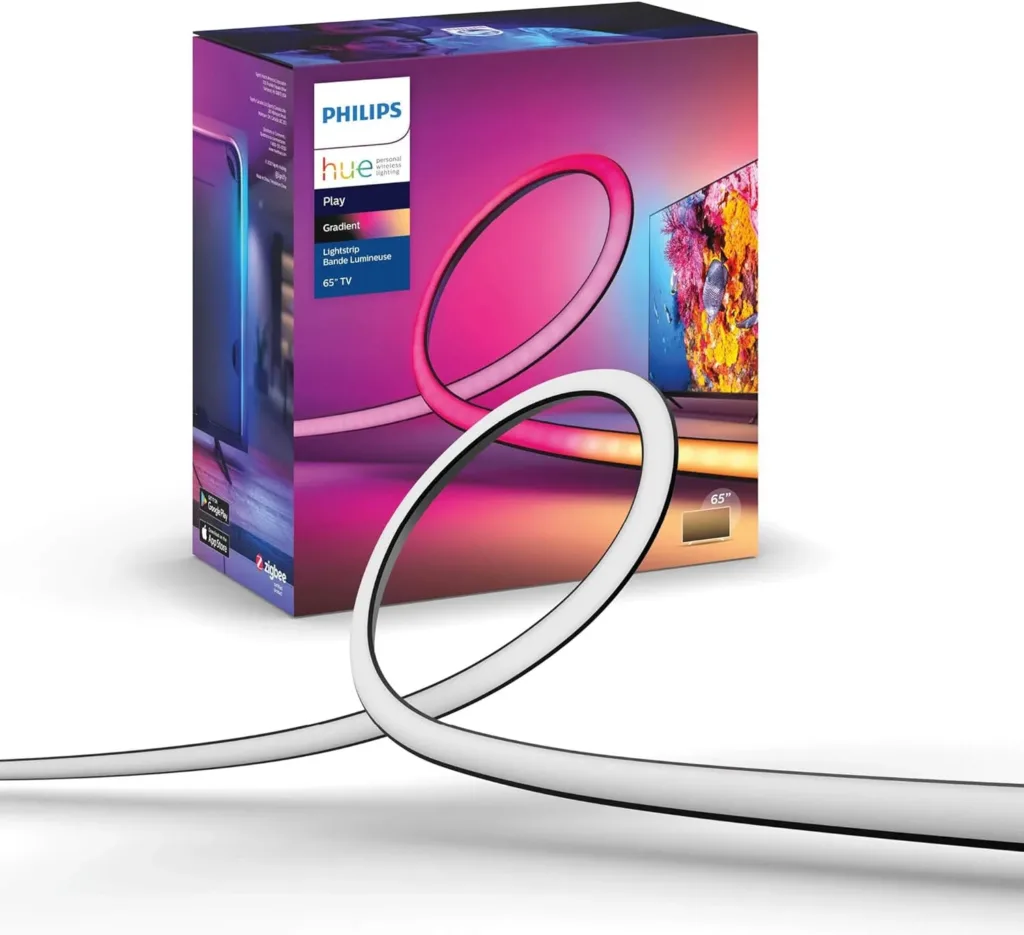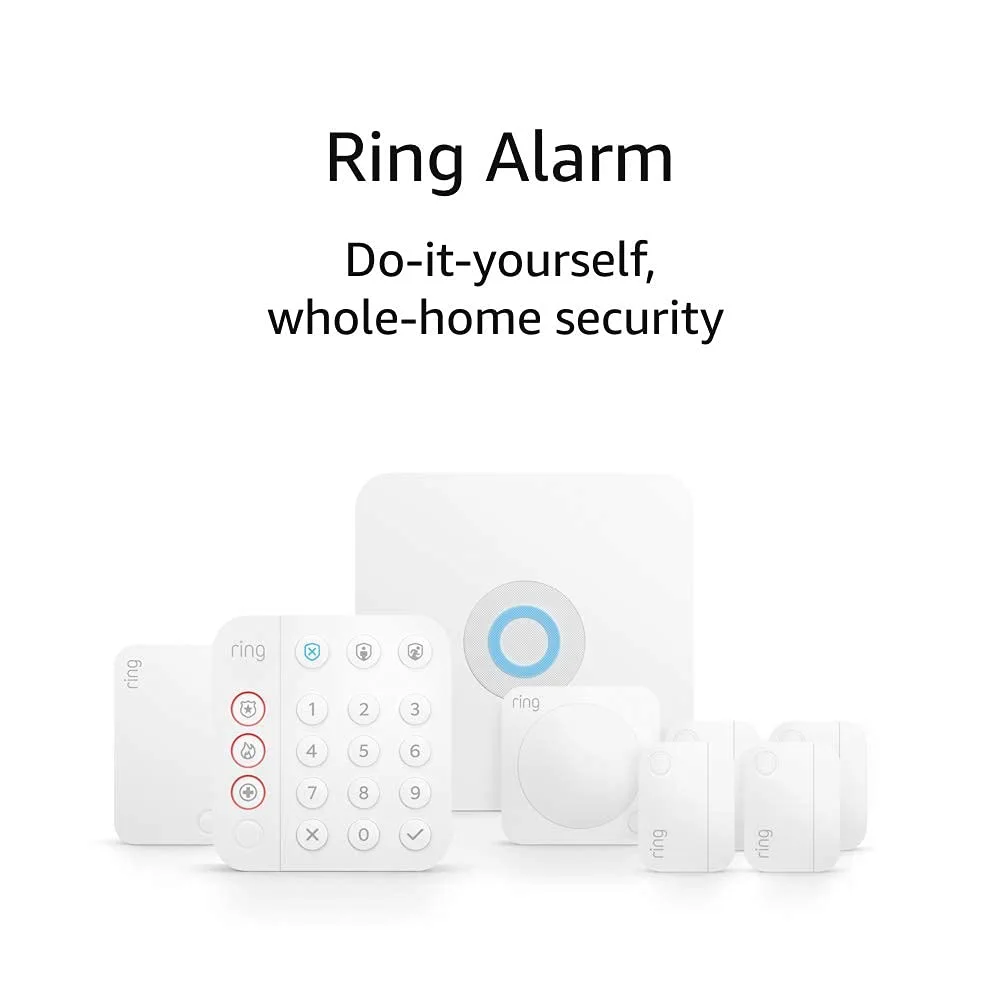In today’s rapidly evolving world, smart home automation is no longer a luxury—it’s becoming a necessity for modern homeowners. With a growing emphasis on convenience, security, and energy efficiency, smart home automation systems offer seamless control over various aspects of your living space, all from a single interface. In 2024, the adoption of smart home technology is set to rise by 15%, making it the perfect time to explore innovative gadgets that can elevate your home’s functionality.
In this article, we’ll explore the benefits of smart home automation, top gadgets to consider, and how they can make your home more intuitive and responsive. Whether you’re new to home automation or looking to upgrade your existing setup, these gadgets will help you create a futuristic living space that enhances both your lifestyle and property value.
Smart Thermostats for Energy Efficiency and Comfort

Smart thermostats are at the forefront of smart home automation, providing precise temperature control while reducing energy consumption. Devices like the Google Nest Learning Thermostat and the Ecobee SmartThermostat learn your routine, automatically adjusting the temperature based on your preferences and habits. With features such as geofencing, voice control, and compatibility with major platforms like Apple HomeKit and Google Home, these devices ensure your home is always at the perfect temperature.
Installation Tip: If you’re new to smart home automation, choose a thermostat that supports easy DIY installation and offers compatibility with your existing HVAC system.
Key Benefits: Reduce heating and cooling costs by up to 15%, remote control through smartphone apps, and integration with other advanced systems for smart home automation.
Smart Lighting Systems to Sync with Your Lifestyle

Smart lighting systems like Philips Hue and LIFX bring your home to life with customizable color options and automated schedules. These systems can be controlled through voice assistants like Amazon Alexa, Google Assistant, or Apple HomeKit, making it easy to adjust brightness, switch colors, and create personalized scenes that fit your mood or activity.
Integration Note: Ensure your smart lights are compatible with other smart devices like motion sensors or security systems for a unified smart home automation experience.
Practical Use Case: Set up “Morning” and “Night” modes with warmer hues in the morning and cooler shades at night to support your natural circadian rhythm.
Smart Security Systems for a Safer Home

A secure home is a smart home. Smart security systems like the Ring Alarm Pro and SimpliSafe provide advanced security features such as facial recognition, real-time alerts, and video monitoring. These systems can integrate with smart locks, door sensors, and smoke detectors to provide complete protection.
Installation Tip: If you’re considering a more complex setup, opt for professional installation services to ensure all components are working together seamlessly.
Features to Look For: Real-time notifications, voice control compatibility, and easy integration with other smart devices for comprehensive security coverage.
Smart Plugs and Switches for Effortless Automation

Smart plugs and switches like the Kasa Smart Plug by TP-Link make it easy to automate appliances and lights. Simply plug them in and use a smartphone app to control devices remotely or set schedules to turn them on and off. These gadgets are a great starting point for beginners looking to dip their toes into smart home automation.
- Best Use Cases: Automate your coffee maker to start brewing before you wake up or set your lights to turn on and off while you’re on vacation for added security.
- Tip: Choose smart plugs and switches that support multiple platforms like Google Home, SmartThings, and Apple HomeKit for better compatibility.
Smart Speakers and Hubs for Centralized Control
Smart speakers and hubs like the Amazon Echo Show and Google Nest Hub serve as the control centers for your smart home. These devices not only play music and answer questions but also manage and automate other connected devices, providing centralized control over your smart home ecosystem.
- Popular Features: Voice control, video calling, streaming, and smart home automation management.
- Compatibility Note: Ensure your smart hub is compatible with other devices like smart cameras, lights, and thermostats to simplify control.
Smart Locks for Keyless Entry and Enhanced Security
Say goodbye to traditional keys with smart locks like the August Wi-Fi Smart Lock and Schlage Encode Smart Wi-Fi Deadbolt. These locks provide remote access, keyless entry, and activity logs that let you know who’s coming and going. Some models can even integrate with smart doorbells and cameras for added security.
- Best For: Busy households, rental properties, or anyone looking to eliminate the hassle of carrying physical keys.
- Security Tip: Look for models with tamper detection and strong encryption protocols to prevent unauthorized access.
Smart Home Automation Systems for Full Control
For those looking to fully automate their home, consider investing in comprehensive systems like SmartThings Hub or Hubitat Elevation. These hubs connect all your devices into a single, cohesive system, offering advanced automation options like “if-this-then-that” rules, multi-device triggers, and enhanced data privacy.
- Why Choose a Hub: Centralized control, advanced automation options, and the ability to connect a wide range of devices from different manufacturers.
- Tip: Choose a hub that supports local control for better privacy and faster response times.
Benefits of Smart Home Automation
- Convenience: Control everything from lighting to security through a single interface.
- Energy Efficiency: Smart energy management systems optimize power consumption, reducing costs.
- Enhanced Security: Advanced surveillance and real-time alerts keep your home safer.
- Comfort: Automated climate and lighting adjustments create a more comfortable environment.
- Increased Property Value: Smart home automation features can boost your home’s resale value, appealing to tech-savvy buyers.
How to Choose the Best Smart Home Automation Gadgets
Selecting the best smart home automation gadgets can be overwhelming with so many options available. To ensure you make the right choices, it’s important to evaluate each gadget based on specific criteria that align with your smart home automation setup, future needs, and technical preferences. Here’s how to choose the perfect smart home devices for your space:
1. Compatibility
The first and most critical factor is compatibility. Make sure that the gadgets you choose can integrate seamlessly with your existing smart home ecosystem. Whether you’re using Apple HomeKit, Google Home, Amazon Alexa, or Samsung SmartThings, compatibility ensures that all devices communicate with each other efficiently. Look for gadgets that support multiple platforms for flexibility, and always check if they work with your preferred voice assistants for hands-free control.
2. Installation Options
Next, consider the installation process. Some smart devices, such as smart plugs or light bulbs, are easy to install on your own (DIY), while others, like security systems or advanced smart lighting, may require professional installation. If you are tech-savvy and enjoy setting up devices, a DIY solution could save you money. However, for more complex systems like home security setups, it may be worth investing in professional installation to ensure everything is configured correctly and securely.
3. Scalability and Future-Proofing
Look for systems that offer scalability, meaning you can add new gadgets as your needs grow. Whether it’s adding more smart lighting, sensors, or security devices, your smart home setup should be flexible enough to expand. It’s also a good idea to choose gadgets that support future technologies like Matter, a new standard aimed at improving the interoperability of smart home devices across different brands. This will ensure that your system remains future-proof, accommodating new innovations in the years to come.
4. User Experience and Control Options
Not all smart gadgets offer the same user experience. Some devices are intuitive and easy to control through user-friendly apps, while others may require more technical knowledge. Before buying, explore the app’s interface or control options and read reviews to gauge ease of use. Devices that offer multiple control options, such as voice commands, app controls, and physical remotes, are often the most convenient for diverse needs.
5. Energy Efficiency and Cost Savings
Smart gadgets should not only enhance convenience but also offer energy-saving benefits. Devices like smart thermostats and smart lighting systems help reduce energy consumption, which can lead to long-term cost savings on utility bills. Look for energy-efficient devices that can track your usage and suggest improvements.
6. Security and Privacy
Given the increasing concerns about data security, it’s essential to choose devices from reputable brands that offer strong encryption and privacy protection. Read up on the device’s privacy policies, opt for gadgets that allow you to control how data is shared, and ensure they regularly provide firmware updates to fix any vulnerabilities.
7. Price and Value for Money
Finally, consider the cost. While some smart home automation gadgets are affordable, others can be more expensive due to advanced features or premium brand reputation. Set a budget and prioritize gadgets that offer a good balance between price and functionality. Always check for product reviews to see whether the extra features justify the price, or if a cheaper alternative could meet your needs.
By considering these factors—compatibility, installation, scalability, user experience, energy efficiency, security, and price—you can confidently choose smart home automation gadgets that will enhance your home’s convenience, safety, and efficiency.
Related to Smart Home Automation
- What are the benefits of smart home automation?
Smart home automation offers a wide range of benefits, including improved convenience, energy efficiency, enhanced security, and increased home value. Automated systems allow you to control lighting, temperature, and security devices remotely, making it easier to manage your home’s environment. Additionally, these systems can reduce energy costs by optimizing heating, cooling, and electricity usage based on your daily routines. - How do smart home automation systems work?
Smart home automation systems use IoT (Internet of Things) devices that communicate over a network, allowing you to control appliances, lighting, and security systems through a central hub or app. The devices are connected to each other via Wi-Fi, Bluetooth, or Z-Wave technology and can be programmed to perform specific actions based on triggers like time, motion detection, or voice commands. - What are the best smart home automation companies?
Some of the top smart home automation companies include Google, Amazon, Apple, and Samsung, which offer comprehensive ecosystems for managing devices. Other noteworthy companies are Control4 and Crestron, known for their high-end, customizable home automation solutions. - Do smart home devices require professional installation?
Many smart home automation devices, like smart bulbs, plugs, and thermostats, can be installed by homeowners without professional help. However, more complex systems, such as integrated security systems or advanced lighting setups, may require professional installation to ensure optimal performance and safety. - What is a smart home hub, and do I need one?
A smart home hub acts as a central controller for all your smart devices, enabling them to communicate with each other and be controlled from a single app. While not always necessary, a hub like Samsung SmartThings or Hubitat Elevation can greatly enhance your system’s capabilities and allow for more complex automation setups. - What is the difference between Zigbee and Z-Wave?
Both Zigbee and Z-Wave are wireless communication protocols used to connect smart devices. Zigbee operates at a higher frequency, making it faster and ideal for dense networks, while Z-Wave has a longer range but can support fewer devices. The choice depends on the specific needs of your home setup. - Are smart home devices secure?
smart home automation devices are generally secure if you follow best practices, such as using strong, unique passwords and enabling two-factor authentication. Choose devices from reputable brands and regularly update firmware to protect against vulnerabilities. - Can smart home devices work without the internet?
Some smart home devices, such as local-only smart plugs and light switches, can operate without an internet connection but may lose remote control functionality. Devices like LIFX Smart Bulbs and Ring Cameras often require an internet connection to access all features. - How can I use smart home tech to secure my home?
Smart security systems like the Ring Alarm Pro or Arlo Pro Cameras provide real-time alerts, video monitoring, and motion detection. You can integrate these with smart locks and access sensors to create a robust home security system. - How do I choose the right smart home automation products?
When selecting smart home automation products, consider compatibility with your existing devices, ease of use, installation requirements, and budget. Start with basic devices like smart plugs or bulbs, and gradually expand to more complex systems based on your needs. - What are the top smart home automation ideas for 2024?
Top ideas for 2024 include smart lighting scenes for different times of the day, automated temperature control based on occupancy, and voice-activated home routines. Integrating AI-driven systems for health monitoring and smart gardening are also becoming popular trends. - Do smart home devices require special wiring?
Most smart devices, like smart plugs and bulbs, do not require special wiring and can be easily installed. However, smart switches and thermostats may need a C-wire (common wire) for proper functionality, especially if they replace traditional fixtures. - How do smart thermostats work?
Smart thermostats like the Google Nest Learning Thermostat or Ecobee SmartThermostat learn your schedule and temperature preferences, adjusting settings automatically to save energy. They can be controlled via smartphone apps and are compatible with voice assistants like Alexa or Google Home. - Can smart home devices be hacked?
While smart home devices can be vulnerable to hacking, using strong passwords, secure networks, and regularly updating your devices’ firmware can minimize risks. Consider using a separate network for smart home devices to enhance security. - How do I integrate my smart home devices with voice assistants?
To integrate devices with voice assistants like Alexa or Google Home, enable the appropriate skills in the assistant’s app and link your devices through their respective accounts. This allows you to control devices using voice commands and create automation routines. - What are the most popular smart home automation services?
Popular services include Amazon Alexa, Google Home, and Apple HomeKit, which offer robust ecosystems for managing a variety of smart devices. More specialized services like IFTTT (If This Then That) allow for complex automation across different brands and platforms. - What are the best smart home gadgets for beginners?
For beginners, start with easy-to-use devices like WeMo Smart Plugs, Philips Hue Lights, or Amazon Echo Dot. These gadgets offer simple setup processes and basic automation capabilities. - How can I save energy with smart home devices?
Use devices like smart thermostats and lighting systems to optimize energy consumption. Smart plugs can turn off devices that are not in use, and energy monitoring systems can help identify areas where energy efficiency can be improved. - What should I consider when choosing a home automation hub?
Consider compatibility, ease of use, and supported automation protocols like Zigbee or Z-Wave. Choose a hub that can connect all your devices and manage them through a single app for better control and automation. - Do smart home devices work with all brands?
Not all smart home devices are compatible with each other. Choose products that support common standards like Zigbee, Z-Wave, or Wi-Fi for greater compatibility. Brands like Amazon, Google, and Apple offer ecosystems that support a wide range of devices from different manufacturers.
Top Smart Home Automation Gadgets to Consider in 2024
- Google Nest Learning Thermostat
- A learning thermostat that adjusts based on your preferences and integrates with major smart home platforms like Google Smart Home Automation and SmartThings. Find it on Amazon.
- A learning thermostat that adjusts based on your preferences and integrates with major smart home platforms like Google Smart Home Automation and SmartThings. Find it on Amazon.
- Philips Hue Smart Lighting System
- Offers versatile lighting options with app control and voice commands. Ideal for setting custom scenes and schedules. Check it out here.
- Offers versatile lighting options with app control and voice commands. Ideal for setting custom scenes and schedules. Check it out here.
- Ring Alarm Pro
- A robust home security system with professional monitoring, real-time alerts, and seamless integration with other devices. View product.
- A robust home security system with professional monitoring, real-time alerts, and seamless integration with other devices. View product.
- Ecobee SmartThermostat
- Features voice control and room sensors for enhanced climate management. Works with Apple HomeKit and Alexa. Learn more.
- Features voice control and room sensors for enhanced climate management. Works with Apple HomeKit and Alexa. Learn more.
- August Wi-Fi Smart Lock
- A top-rated smart lock that lets you control your door remotely and provides activity logs. Explore product.
Investing in smart home automation can transform your living space into a more comfortable, secure, and energy-efficient environment. By choosing the right gadgets and services, you can create a home that not only meets your current needs but also adapts to future technological advancements. Explore the best smart home automation gadgets and start building your futuristic home today!
This blog post, optimized with the right keywords and structured for readability, aims to rank higher on Google while providing value to your readers. Feel free to copy and paste it directly to your site!







